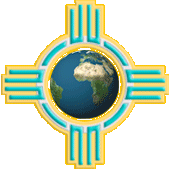Divided: Five Colliding Worldviews and How to Navigate Them
By Dr. Denise R. Ames
Why can’t we get along? Divided looks at the deep cultural divide through the lens of five colliding worldviews—indigenous, traditional, progressive, globalized, and transformative. This approach helps us make sense of our deep divisions and suggests ways of bridging them.
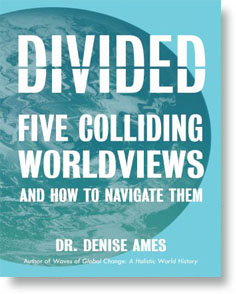
Book
2020, 258 pgs.$14.95
E-Reader (PDF)
$11.95
Educator and life-long learning resources
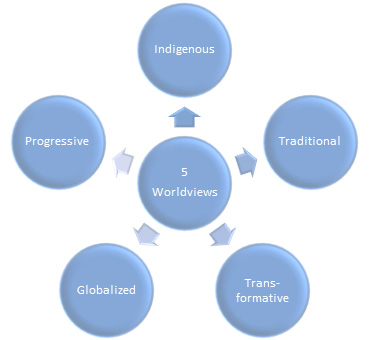
Divided addresses the question on the lips of every American: why can't we get along? The cultural divide is threatening our democracy and destabilizing our country. Divided looks at the deep cultural divide through the lens of five colliding worldviews—indigenous, traditional, progressive, globalized, and transformative. This approach helps us make sense of our deep divisions.
It is urgent that we understand and bridge the cultural divide. Bridging the divide is dependent upon first understanding it. Gaining an understanding of the five worldviews enhances our success of arriving at sensible solutions and increasing civil conversations. If not, rancor and intractability ensue.
The purpose of Divided is to present the worldviews in a clear and personal way. It is a codebook for understanding other perspectives. This approach gets away from the judging game and helps readers understand what motivates others to hold the views they do. Once we can emotionally connect with others and show empathy and understanding, viable solutions can be worked out for the betterment of all, not just one group.
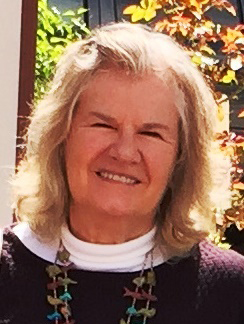 |
Dr. Ames cares deeply about sharing her work with others. She gives workshops, classes, and presentations locally on the topic. She finds that most people have become entrenched in their own "bubble" of cultural isolation and strongly feel they are morally right while others are morally wrong. Looking inward to understand one’s position and biases is necessary before outward reconciliation can take place. She has found that understanding the cultural divide is imperative before meaningful healing can take place. |
Chapter SummariesPart 1: Divided: How Did We Get to This Point? |
|
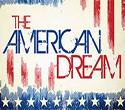 |
Chapter 1. Why are we divided? This introductory chapter asks the question: Why can’t we get along? The long-held national narrative in the United States, the American Dream narrative, is fraying and no longer speaks to many people about their hopes and aspirations. Instead, the author presents two conflicting and different national narratives that are contributing to the divide: the Liberal Narrative and the Conservative Narrative. After explaining the purpose of the book and her intentions in writing it, the author asks readers to avoid the judging game, in which they regard their particular group as morally superior to others. She wraps up the chapter with an overview of ten reasons why the cultural divide has developed and is widening in the United States. |
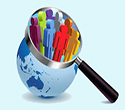 |
Chapter 2. Worldviews: Our Window to the World The chapter opens with a definition of worldviews and examples of it. The author defines a worldview as a way of understanding or a lens through which one explains events, phenomena, and actions that happen in our everyday lives. It refers to the framework of ideas and beliefs through which an individual interprets the world and interacts with it. After describing how our worldviews are entrenched into our way of thinking and acting, she introduces the five worldviews: indigenous, traditionalist, progressive, globalized, and transformative. The Populist phenomenon on the left and right is explained. The author also examines how we can alter our worldview and what components are found in all worldviews. Wrapping up the chapter, is an explanation of the bounded assumptions, or unquestioned beliefs, found in each of the five worldviews. |
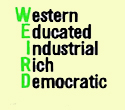 |
Chapter 3. The Modern Worldview For over 500 years, the modern worldview held sway on the world stage; however, today it is giving way to other worldviews. It fundamentally changed how people looked at and acted in the world. All of the worldviews, except the indigenous, have emerged out of or are a reaction to the modern worldview: traditionalist, progressive, globalized, and transformative. The author explains the modern worldview by highlighting modern thought, economy, politics, environment, and society. She poses a question to the reader, “Are you WEIRD?” (Western, educated, industrialized/individualized, rich, and democratic) Most likely the answer will be yes. The concept of “weirdness” is introduced here and also presented in later chapters. |
Part 2: Ways We See the World: Five Worldviews |
|
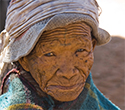 |
Chapter 4. The Indigenous Worldview The indigenous worldview contrasts sharply with the modern worldview. Indigenous peoples are any ethnic group who share a similar ethnic identity and inhabit a geographic region with which they have the earliest known historical connection. Estimates vary, but approximately six percent of the world’s population identify as indigenous. The “Story of a Mexican Fisherman” makes a humorous and apt comparison of the clashing modern and indigenous worldviews. The rest of the chapter highlights economic, social, religious, political, psychological, and environmental differences. A story about Nobel Peace Prize recipient Roberta Menchu, an indigenous woman from Guatemala, gives a personal touch to what it means to be an indigenous person in a modern world. |
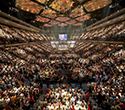 |
Chapter 5. The Traditionalist Worldview The traditionalist worldview in this book is organized into four different groups: traditional political conservatives, the populist right, the extreme alt-right, and religious fundamentalists or evangelicals. A traditionalist is a person who supports society’s established customs and beliefs, and does not want to change them or only incrementally change. Attention is given to the sudden and momentous rise of the populist right, especially the unexpected election of President Donald Trump in 2016. The main part of the chapter probes fundamentalism, and in particular Christian fundamentalism, since it is the largest group in the traditional worldview. Mention is also given to Muslim and Jewish fundamentalism, to show how fundamentalism is a global phenomenon. |
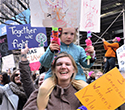 |
Chapter 6. The Progressive Worldview Out of the unraveling of the modern worldview has emerged the progressive worldview. This worldview exists as bickering factions each vying for a more influential voice—classic/moderate liberals, populist/progressive left, and the antifa radical left. The influence of post-modern ideology on the progressive movement is explored. The historic background of the progressive movement is briefly introduced, and the chapter concludes with a look at the progressive movement today. The question of why the progressive movement has moved farther to the left is also addressed. |
 |
Chapter 7. The Globalized Worldview Sweeping the world, a globalized worldview has greatly changed the landscape in which people around the world work, play, interact, and live their everyday lives. Greatly intensifying since the 1980s, it reflects the many ways in which people on an increasingly populated planet have been drawn together through the flow of goods, services, capital, labor, technology, ideas, information, and the movement of people. Globalization is a complex, multi-dimensional phenomenon that interconnects worldwide economic, political, cultural, social, environmental, and technological forces, transcending national boundaries. Through globalization the world has become a single place that serves as a frame of reference, influencing the way billions of people around the world conduct their everyday lives. A globalized economy, society, politics, and culture are explored in this chapter. |
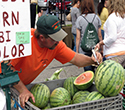 |
Chapter 8. The Transformative Worldview At this point in time, diverse people around the world are actively calling for a different worldview. Some say a different story is urgently needed to assure the continuation of our human species and life as we know it on Earth. Supporters of a transformative worldview, at least in part, imagine that diverse paths are possible and attainable. They are promoting different ideas and diverse options that offer alternatives to prevailing notions of cultural uniformity, rigid fundamentalism, corporate dominance, consumer-driven values, selfish individualism, oligarchic concentration of wealth and power, political stalemate, unreasoned progress, and environmental destruction. Those who embrace a transformative worldview have a diverse array of thoughts, beliefs, ideas, theories, lifestyles, choices, and actions that defy rigid categorization but share common democratic principles and compassionate, yet realistic, ideals. |
Part 3: Navigating the Cultural Divide |
|
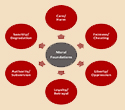 |
Chapter 9. Integrating Five Worldviews and Six Moral Foundations This chapter integrates the Five Worldviews and Jonathan Haidt’s Moral Foundations Theory, which provides more depth when looking at the cultural divide. Haidt’s six moral foundations—care, fairness, liberty, loyalty, sanctity, and authority—are explained. Haidt draws on the work of Emile Durkheim and John Stuart Mill to help describe our cultural divide. The author makes the case that the human mind is not a blank slate and agrees with Haidt in arguing that evolutionary psychology plays an important role in the formation of human behavior. This behavior is not typically guided by rational thought. |
 |
Chapter 10. Bridging and Healing the Cultural Divide We are at a vulnerable time in our nation’s history in which life-wracking changes are making us feel uncertain and disheartened. The bulk of this chapter describes clear and useful tips and practices that the author and others have used and tested to help bridge the cultural divide. Absolute black and white thinking, projections of moral superiority, and strident demands for action are acrimonious ways of being that stifle conversation and compromise in the face of adversity. The chapter concludes with a description of ways we can heal the divide through non-judgmental interaction, recognizing our human commonalities, and looking at our larger place in the universe that we all share. Integrating the Chinese symbol of yin/yang into our thinking and being is a mature way to more deeply heal the divisive cultural divide. |
